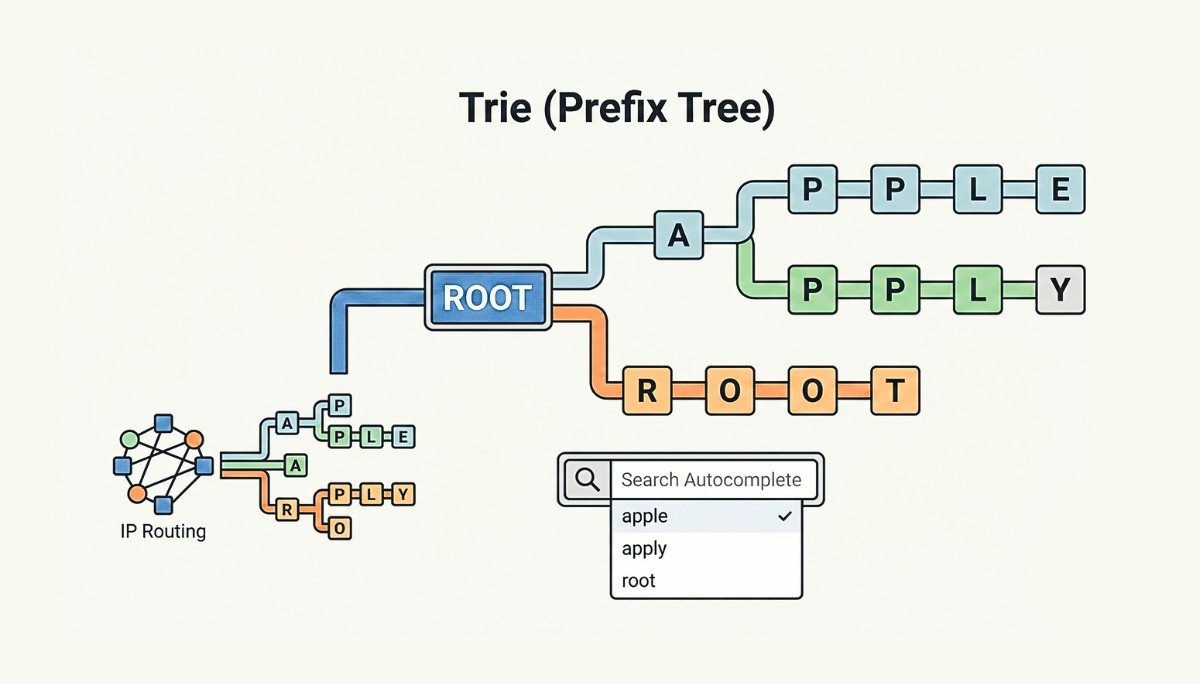Best NLP Models Explained: From spaCy to GPT-4
By
Ethan Fahey
•
Aug 11, 2025
Natural Language Processing (NLP) models are what make it possible for machines to interpret, understand, and even generate human language. From powering chatbots to driving sentiment analysis and real-time translation, these models are behind many of the AI tools we interact with daily. In this article, we’ll take a closer look at some of the most widely used NLP models like BERT, GPT-3, and spaCy, and what makes them so effective. For AI engineers and recruiters in the business world, understanding these models is essential. Fonzi AI makes it easier to find top NLP talent or identify the right tools and integrations for your AI stack, helping teams stay competitive and innovative.
Key Takeaways
Natural Language Processing (NLP) enables intuitive human-machine communication through enhanced understanding and generation of human language.
Pre-trained models like BERT, GPT-3, and spaCy have advanced NLP capabilities, streamlining text processing for various applications.
Challenges such as language ambiguity and bias in training data continue to affect NLP model performance, highlighting the need for ongoing improvements and ethical considerations.
Understanding NLP Models

Natural Language Processing (NLP) serves as the bridge between human communication and machine understanding in the field of computer science. It enables computers to understand, interpret, and generate human language, making interactions with machines more intuitive and effective. With recent advancements, NLP models have substantially improved in understanding the nuances of human language and generating natural language coherent responses, facilitating the use of natural human language, spoken language, and natural language understanding.
The applications of NLP are vast and varied. Sentiment analysis, for instance, allows businesses to gauge customer emotions and perceptions, providing valuable insights for decision-making. Machine translation has also seen significant improvements, leveraging neural networks to convert text from one language to another with greater fluency and accuracy.
Another critical application is automatic document summarization, which distills essential information from lengthy texts, saving time and enhancing productivity. Beyond these applications, NLP models are invaluable for analyzing large textual datasets. These models convert unstructured text into structured insights, significantly aiding decision-making processes across various industries. Their ability to automate and streamline text analysis tasks underscores their importance in the modern digital landscape.
Key Features of Effective NLP Models
Data preprocessing techniques are crucial in transforming raw text into a machine-readable format, which is fundamental for effective NLP models. It includes:
Cleaning the data by removing unwanted elements like punctuation, special characters, and numbers.
Tokenization.
Stemming.
Lemmatization.
These steps further refine the text for analysis.
Another key step is feature extraction, which converts raw textual data into numerical representations. Methods used to capture the significant features of the text include:
Bag of Words
TF-IDF
Contextual embeddings
This stage is essential for defining the relationships between documents and the text they contain, ultimately improving the performance of machine learning models and information retrieval.
Deep learning models, with their sophisticated neural network architectures, have revolutionized NLP. Key features include:
Generating probability distributions for the next word based on word embeddings, enhancing predictive capabilities.
Using transfer learning techniques to fine-tune pre-trained models on specific tasks.
Saving time and resources while achieving high accuracy through fine-tuning with a deep learning model and deep learning methods.
Popular Pre-trained NLP Models

Pre-trained models revolutionized NLP, forming the foundation for many state-of-the-art applications and allowing developers to build on existing knowledge. These models have led to significant advancements in various NLP tasks, from chatbots to generative models.
Three popular pre-trained models worth exploring are BERT, GPT-3, and spaCy. Each of these models has unique features and strengths that make them suitable for different applications.
BERT: Bidirectional Encoder Representations from Transformers
BERT, or Bidirectional Encoder Representations from Transformers, has set a new standard in NLP with its bidirectional context understanding. Unlike previous models that read text sequentially, BERT analyzes the context of a word based on all the surrounding words, leading to more accurate and nuanced interpretations. This is achieved through its transformer architecture, which includes a self-attention mechanism to understand relationships between words in a sentence.
Trained on a massive corpus that includes billions of words from Wikipedia and the Google BooksCorpus, BERT generates contextualized word embeddings that excel in various tasks such as sentiment analysis, question answering, and text classification. Its ability to handle input data using only the encoder mechanism makes it highly effective for multiple NLP tasks, delivering impressive accuracy and performance.
GPT-3: Generative Pre-trained Transformer 3
GPT-3, or Generative Pre-trained Transformer 3, is renowned for its ability to generate text that can be indistinguishable from human writing. With 175 billion parameters, this autoregressive model has set new benchmarks in NLP, excelling in tasks such as machine translation and text summarization with minimal training.
One of GPT-3’s key strengths is its performance in few-shot, one-shot, and zero-shot learning, where it can perform tasks without extensive fine-tuning. By scaling up the language model, GPT-3 has demonstrated task-agnostic few-shot performance, making it a versatile tool for various NLP applications.
spaCy
spaCy is a popular library optimized for speed and efficiency, making it ideal for processing large volumes of text quickly. It simplifies advanced natural language processing tasks, enabling users to handle extensive text data efficiently and ensuring quick processing times.
One of the standout features of spaCy is its capability in named entity recognition and part-of-speech tagging. spaCy identifies and categorizes entities in text, offering significant insights into its structure and meaning, making it invaluable for various NLP applications.
Advanced Deep Learning Models in NLP

Advanced deep learning models have pushed the boundaries of NLP, achieving state-of-the-art results in various deep learning methods. These models, such as XLNet, RoBERTa, and ALBERT, leverage sophisticated architectures and training techniques to enhance their performance and capabilities.
We’ll explore the unique features and contributions of each of these models to the field of NLP.
XLNet: eXtreme Language Understanding Network
XLNet enhances the capabilities of BERT by capturing bidirectional context while maintaining an autoregressive model that aids in understanding language structure. This dual approach significantly improves its performance in language understanding tasks, making it a powerful tool for text classification and question answering.
The architecture of XLNet allows it to better capture the nuanced relationships within language, leading to enhanced language understanding and processing capabilities compared to previous models.
RoBERTa: Robustly Optimized BERT Approach
RoBERTa, or Robustly Optimized BERT Approach, builds on BERT by employing longer training durations, larger batches, and more data. This approach, combined with dynamic masking techniques and the removal of next sentence prediction, allows RoBERTa to outperform many post-BERT models.
The use of advanced pre-processing steps and training on the CC-NEWS dataset contributes to RoBERTa’s robust performance, making it a highly effective tool for various NLP tasks.
ALBERT: A Lite BERT for Self-supervised Learning
ALBERT addresses the issue of large model sizes by incorporating cross-layer parameter sharing, significantly reducing the model’s size while maintaining performance. This design makes ALBERT an efficient model for natural language processing tasks, achieving state-of-the-art results on key benchmarks such as GLUE, RACE, and SQUAD.
By optimizing the architecture for self-supervised learning, ALBERT provides a powerful yet lightweight solution for various NLP applications.
Specialized NLP Models for Specific Tasks

Specialized NLP models are designed to excel in performing specific NLP tasks, providing tailored solutions for various applications. These models leverage advanced techniques, including semantic analysis, to deliver high performance in tasks such as named entity recognition, part-of-speech tagging, and dependency parsing.
Three specialized models worth exploring are ELECTRA, T5, and MobileBERT, each optimized for specific tasks and environments.
ELECTRA: Efficiently Learning an Encoder that Classifies Token Replacements Accurately
ELECTRA employs a novel training approach that focuses on classifying whether tokens in a sentence have been replaced, enhancing the efficiency of learning. This method leads to superior performance in various NLP benchmarks, making ELECTRA a highly effective model for tasks such as text classification and sentiment analysis.
By efficiently training encoders, ELECTRA enhances the overall performance of NLP tasks, providing a robust solution for complex text analysis.
T5: Text-to-Text Transfer Transformer
T5, or Text-to-Text Transfer Transformer, simplifies the utilization of NLP models by converting all tasks into a text-to-text format. This unified approach allows T5 to handle multiple tasks efficiently, from machine translation to language translation, language tasks, and text summarization.
By converting various tasks into a consistent format, T5 streamlines the process of model deployment and utilization, making it a versatile tool for NLP applications.
MobileBERT: Optimized for Mobile Devices
MobileBERT is a smaller and faster variant of BERT. It is specifically designed to be optimized for mobile hardware. It maintains comparable performance to BERT while significantly reducing the model size, making it ideal for mobile application deployment.
Optimized for mobile devices, MobileBERT ensures efficient performance without sacrificing accuracy, making it ideal for on-the-go NLP tasks.
How Fonzi Can Help You Hire Top AI Engineers
Fonzi operates as a specialized marketplace for AI engineering talent, connecting companies with top-tier, pre-vetted AI engineers. With a focus on quality and efficiency, Fonzi ensures that companies can quickly find the right talent for their needs, from initial AI roles to large-scale recruitment.
The platform’s approach includes structured evaluations, built-in fraud detection, and bias auditing, ensuring a smooth and reliable hiring process. Most hires happen within three weeks, making Fonzi a fast and consistent solution for AI talent acquisition.
Best Practices for Implementing NLP Models

Implementing NLP models effectively requires a focus on several best practices. Utilizing pre-trained models can save time and resources, allowing developers to build on existing knowledge rather than starting from scratch. The quality of training data is paramount; poor data can lead to ineffective learning and subpar model performance.
Multi-task learning and proper optimization techniques, like learning rate annealing, can significantly enhance model performance, carrying significant meaning for the overall effectiveness of the training process. Attention mechanisms are also crucial for improving context awareness during training.
Lastly, evaluation, validation, and fine-tuning are crucial processes to ensure the effectiveness of NLP models.
Challenges in Natural Language Processing
Several challenges can impact the performance of NLP models. Ambiguities in human language, such as idiomatic expressions and context-dependent meanings, can confuse NLP systems, necessitating advanced context analysis for accurate interpretation, including word sense disambiguation. Misspellings and new vocabulary also present significant hurdles, requiring models to recognize and adapt to these variations.
Biases in training data can lead to skewed results, affecting the fairness and accuracy of NLP models. This is particularly concerning in sensitive areas like government services and healthcare, where biased outputs can have serious implications. Ongoing efforts in ethics and AI are necessary to address these challenges, reduce bias, and improve model fairness.
Future Trends in NLP
The future of NLP is set to be shaped by several emerging trends. Multimodal capabilities, which allow models to process text, images, and audio simultaneously, are becoming increasingly important. This integration enhances the ability of models to understand and generate human-like responses, pushing the boundaries of what artificial intelligence and speech recognition can achieve.
Large Language Models (LLMs) continue to evolve, with improvements in understanding context and generating coherent, human-like text. These advancements promise to make natural language processing models even more powerful and versatile, opening up new possibilities for applications across various industries, particularly in the realm of computational linguistics, language translation, language data, language technology, language modeling, and language generation.
Summary
NLP models have come a long way, transforming how we interact with technology and process language. From foundational models like BERT and GPT-3 to specialized tools like ELECTRA and MobileBERT, each model brings unique capabilities and improvements to the table. These models have revolutionized tasks such as sentiment analysis, machine translation, and text summarization, making them indispensable in various industries.
Looking ahead, the rise of multimodal capabilities and the rapid evolution of Large Language Models are set to take NLP to an entirely new level. By grasping the unique strengths and real-world applications of different models, developers can unlock smarter, more efficient, and more impactful NLP solutions. This field is still just getting started, and the road ahead is packed with innovation and opportunity. For businesses, that means now is the time to invest in the right talent and technology, something Fonzi AI makes easier by connecting companies with top NLP experts and helping teams build cutting-edge AI capabilities that stay ahead of the curve.




